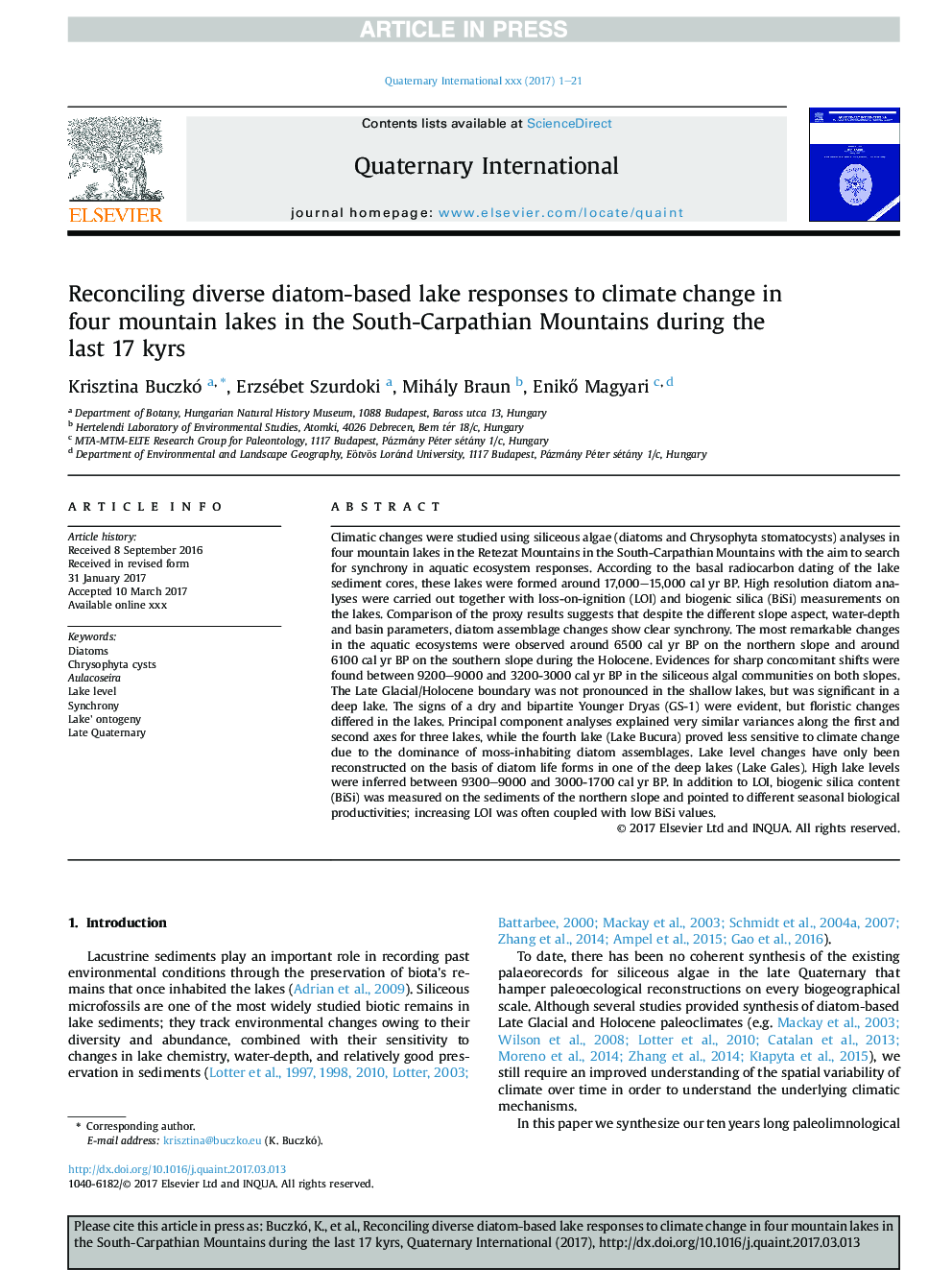| کد مقاله | کد نشریه | سال انتشار | مقاله انگلیسی | نسخه تمام متن |
|---|---|---|---|---|
| 7449551 | 1484034 | 2018 | 21 صفحه PDF | دانلود رایگان |
عنوان انگلیسی مقاله ISI
Reconciling diverse diatom-based lake responses to climate change in four mountain lakes in the South-Carpathian Mountains during the last 17Â kyrs
ترجمه فارسی عنوان
تطبیق پاسخ های مختلف دریاچه دیاتومه به تغییرات اقلیمی در چهار دریاچه کوه در کوه های کارپات جنوبی طی 17 سال گذشته
دانلود مقاله + سفارش ترجمه
دانلود مقاله ISI انگلیسی
رایگان برای ایرانیان
کلمات کلیدی
موضوعات مرتبط
مهندسی و علوم پایه
علوم زمین و سیارات
زمین شناسی
چکیده انگلیسی
Climatic changes were studied using siliceous algae (diatoms and Chrysophyta stomatocysts) analyses in four mountain lakes in the Retezat Mountains in the South-Carpathian Mountains with the aim to search for synchrony in aquatic ecosystem responses. According to the basal radiocarbon dating of the lake sediment cores, these lakes were formed around 17,000-15,000 cal yr BP. High resolution diatom analyses were carried out together with loss-on-ignition (LOI) and biogenic silica (BiSi) measurements on the lakes. Comparison of the proxy results suggests that despite the different slope aspect, water-depth and basin parameters, diatom assemblage changes show clear synchrony. The most remarkable changes in the aquatic ecosystems were observed around 6500 cal yr BP on the northern slope and around 6100 cal yr BP on the southern slope during the Holocene. Evidences for sharp concomitant shifts were found between 9200-9000 and 3200-3000 cal yr BP in the siliceous algal communities on both slopes. The Late Glacial/Holocene boundary was not pronounced in the shallow lakes, but was significant in a deep lake. The signs of a dry and bipartite Younger Dryas (GS-1) were evident, but floristic changes differed in the lakes. Principal component analyses explained very similar variances along the first and second axes for three lakes, while the fourth lake (Lake Bucura) proved less sensitive to climate change due to the dominance of moss-inhabiting diatom assemblages. Lake level changes have only been reconstructed on the basis of diatom life forms in one of the deep lakes (Lake Gales). High lake levels were inferred between 9300-9000 and 3000-1700 cal yr BP. In addition to LOI, biogenic silica content (BiSi) was measured on the sediments of the northern slope and pointed to different seasonal biological productivities; increasing LOI was often coupled with low BiSi values.
ناشر
Database: Elsevier - ScienceDirect (ساینس دایرکت)
Journal: Quaternary International - Volume 477, 30 May 2018, Pages 117-137
Journal: Quaternary International - Volume 477, 30 May 2018, Pages 117-137
نویسندگان
Krisztina Buczkó, Erzsébet Szurdoki, Mihály Braun, EnikÅ Magyari,
